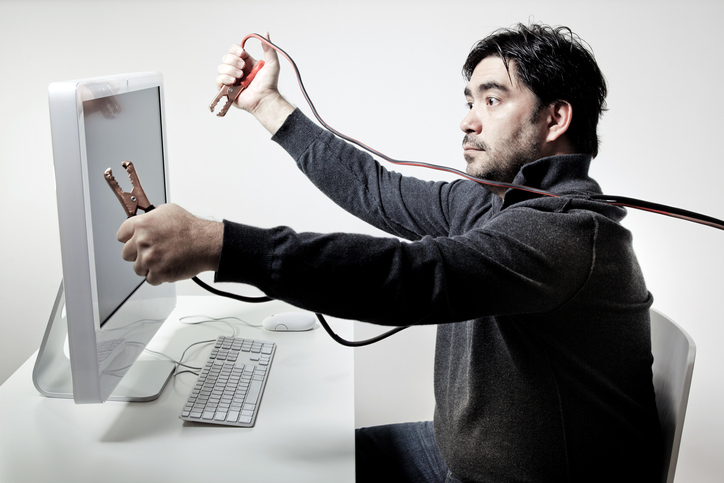When and Why Should You Restart Your Computer?
How long has it been since you restarted your computer?
Most people have a habit of putting their computer to sleep when not in use and then resuming when they’re ready to get back to work.
While the computer may work fine for a while, not giving your computer enough time to boot up can have long-term repercussions. Even if it’s a new device, failing to reboot it at least once a week can diminish its efficiency and cause slowdowns.
Most people are uncertain of when or how often they should restart their computers. In most cases, they reboot only when the computer starts acting up.
Restarting your computer often is a good habit that can help prolong your computer’s life and prevent slowdowns. You shouldn’t wait for glitches to occur before you can restart your computer.

When Should You Restart Your Computer?
We have five most crucial instances when you should restart your computer, and these include when:
- Your computer operations become slower than usual
- You start getting application errors
- You’ve installed new software updates
- Your computer fails to connect to the internet
- You experience performance issues
- Your computer feels hot to the touch
- Your screen freezes
When your device is on, there are programs that run in the background causing slow operations. Rebooting your computer will close any open applications and clear the cache, improving your computer’s operation speed.
One of the most common side effects of software applications is memory leaks among other glitches. Restarting your computer can clear caches associated with the application error you’re getting, providing a quick fix to the problem.
All computer software relies on updates for better functionality. While most updates are automatic, you have to restart your computer to ensure all the updates are installed.
Connectivity issues may arise due to a glitch in your computer’s network settings. If you notice that your computer is not connected to the internet but other devices are, a quick reboot can reset your network settings and get you back up and running.
Any performance issues such as a full RAM on CPU usage at maximum capacity are difficult to decipher unless you’re an expert. However, restart you computer can clear the issues and restore your computer’s function.
Now that you understand the when, let’s figure out the why.
Why Should You Restart Your Computer?
The most important reason to restart your computer is to ensure smooth operation by clearing the memory and preventing your computer’s CPU from overworking.
An overworked processor may cause your computer to become sluggish and overheat, and the possibility of permanent damage to the computer’s hardware.
Restarting your computer can save you time and unnecessary costs for taking it to a specialist over minor issues. A quick restart can fix most emergent issues and restore your computer’s settings.
To better understand the benefits of restarting your computer, let’s review what happens when you reboot.
1. Flushes Your Computer’s RAM for Better Performance
Random Access Memory (RAM) is your computer’s primary type of memory, in charge of handling short-term activities and data. When you restart your computer, all the random and useless data that’s been clogging up your device is flushed out, clearing space for new data and resulting in better performance.
2. Stops Memory Leaks
Memory leaks arise when a program is not properly closed or, in some cases, due to an error by the developer. Several applications utilize your machine’s RAM when they’re open and clear space when closed.
Your computer’s performance is reliant on the available memory space. An application with memory leaks can fail to recover your RAM’s memory, causing slower performance. Rebooting your computer resets the application to its default settings, and in the process, gets rid of the compromised data causing the leaks.
3. Improves Your Computer’s Connectivity Issues
Random internet or Bluetooth connectivity issues can be solved by rebooting your system. When your computer goes long without a reboot, you may start experiencing connectivity glitches such as:
- Unavailable internet connection
- Trouble connecting to other devices’ Bluetooth
Both internet and Bluetooth connectivity rely on software. When the router’s software detects a problem, all users are automatically booted out. Restarting your computer restores all connectivity functions to the last by riding your computer off bugs and glitches.
With a clear understanding of why you should reboot your device, let’s review how to actually do it.
How to Reboot Your Computer
Remember that restarting your computer is not the same as shutting it down or just turning off the monitor. On either a PC or a Mac, users frequently misinterpret the Shut-Down or Sleep choices as Reboot. Keep in mind that you want to click Restart.
Here is a simple guide on how to restart your device.
To Restart a PC
- In the bottom left corner, click the Windows symbol or Start
- Look for the Power icon (depending on your version of Windows, the icon will appear in different locations)
- Click Restart
- If your PC is completely frozen, press and hold the power button until the system goes off. Wait 5 seconds before turning it back on. Only do this if you are unable to complete the previous three stages
To Reboot a Mac
- Look for the Apple logo in the upper left corner
- Choose Restart from the drop-down option
- On the pop-up menu, click the Restart option
- If your Mac is completely frozen, press and hold the power button until the system goes off. Wait 5 seconds before turning it back on. Only do this if you are unable to complete the previous three stages.
What to Do If Rebooting Doesn’t Help
If a restart does not resolve your problem, there might be a serious underlying problem with your device. It’s also worth noting that rebooting your computer is simply a temporary solution. If the symptoms keep reoccurring, you may need a technician to have a look at your computer to check for software issues.
At Compunet InfoTech, we pride ourselves in providing software and IT solutions to all our clients to help their business run effectively. Our team of experienced tech support professionals can help you reboot your computer and solve your IT problems. Contact us today for technical assistance or for more information about our services.
Thanks to our colleagues at Velocity IT in Dallas for their help with this information.




